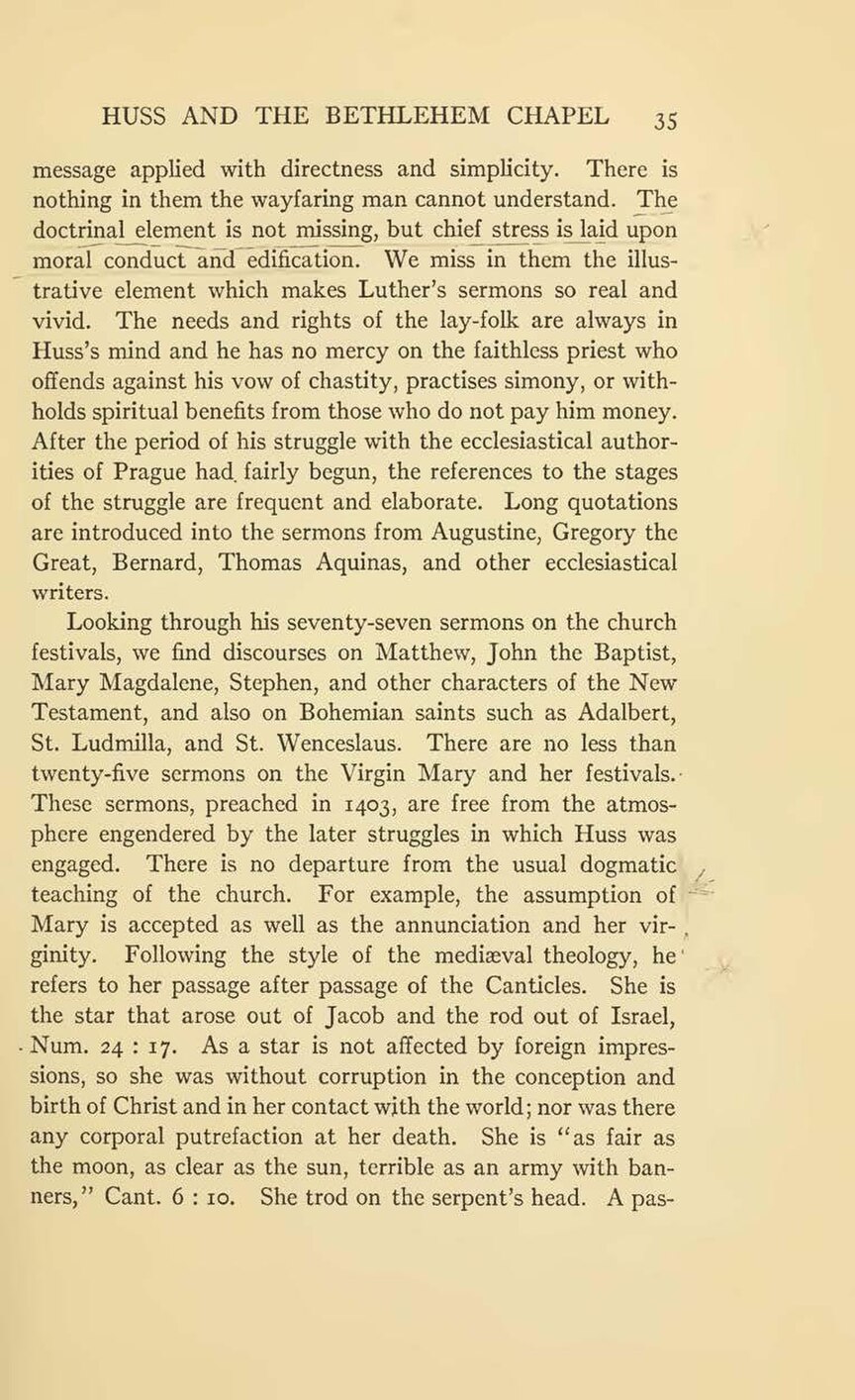message applied with directness and simplicity. There is nothing in them the wayfaring man cannot understand. The doctrinal element is not missing, but chief stress is laid upon moral conduct and edification. We miss in them the illustrative element which makes Luther’s sermons so real and vivid. The needs and rights of the lay-folk are always in Huss’s mind and he has no mercy on the faithless priest who offends against his vow of chastity, practises simony, or withholds spiritual benefits from those who do not pay him money. After the period of his struggle with the ecclesiastical authorities of Prague had fairly begun, the references to the stages of the struggle are frequent and elaborate. Long quotations are introduced into the sermons from Augustine, Gregory the Great, Bernard, Thomas Aquinas, and other ecclesiastical writers.
Looking through his seventy-seven sermons on the church festivals, we find discourses on Matthew, John the Baptist, Mary Magdalene, Stephen, and other characters of the New Testament, and also on Bohemian saints such as Adalbert, St. Ludmilla, and St. Wenceslaus. There are no less than twenty-five sermons on the Virgin Mary and her festivals. These sermons, preached in 1403, are free from the atmosphere engendered by the later struggles in which Huss was engaged. There is no departure from the usual dogmatic teaching of the church. For example, the assumption of Mary is accepted as well as the annunciation and her virginity. Following the style of the mediæval theology, he refers to her passage after passage of the Canticles. She is the star that arose out of Jacob and the rod out of Israel, Num. 24: 17. As a star is not affected by foreign impressions, so she was without corruption in the conception and birth of Christ and in her contact with the world; nor was there any corporal putrefaction at her death. She is “as fair as the moon, as clear as the sun, terrible as an army with banners,” Cant. 6: 10. She trod on the serpent’s head. A pas-
